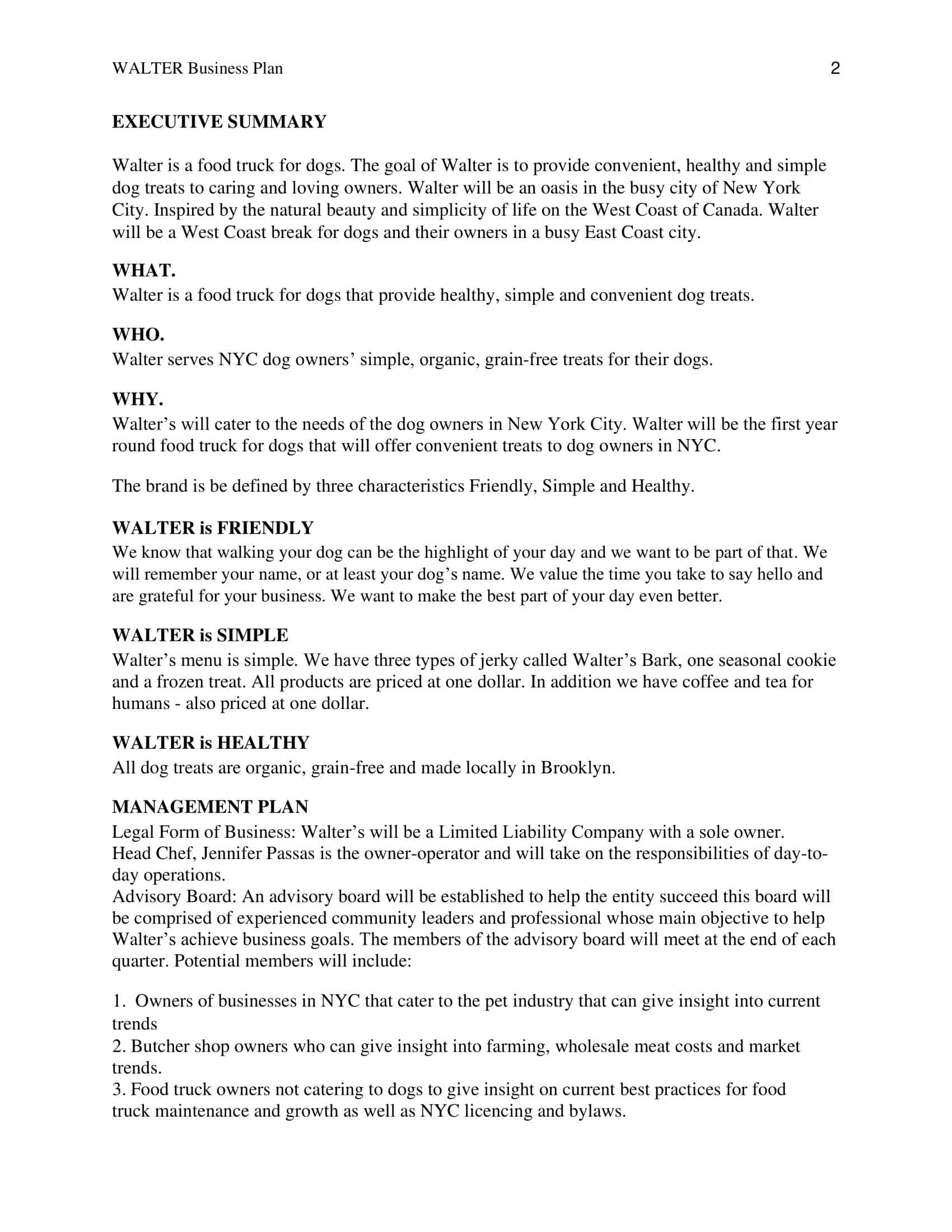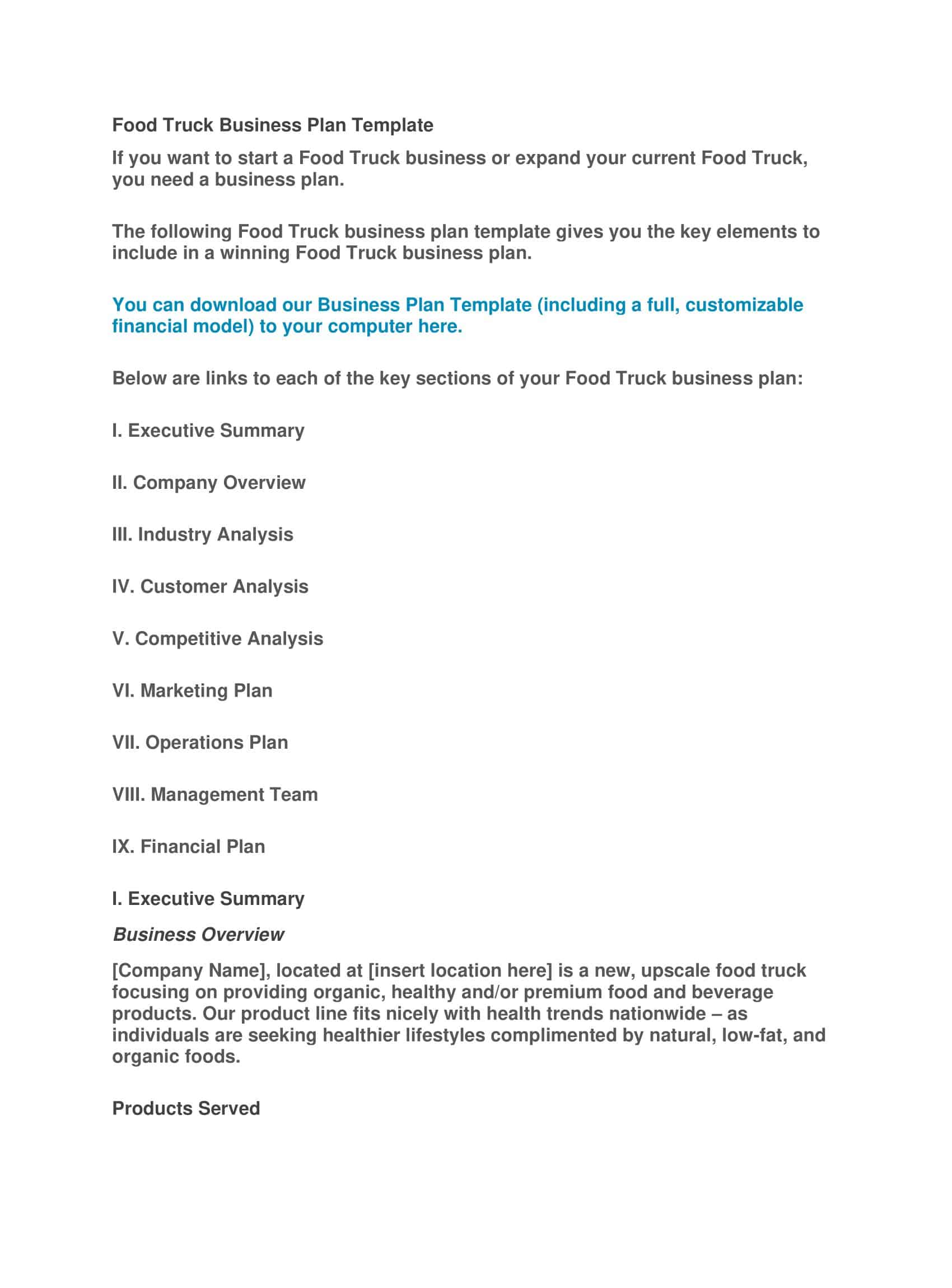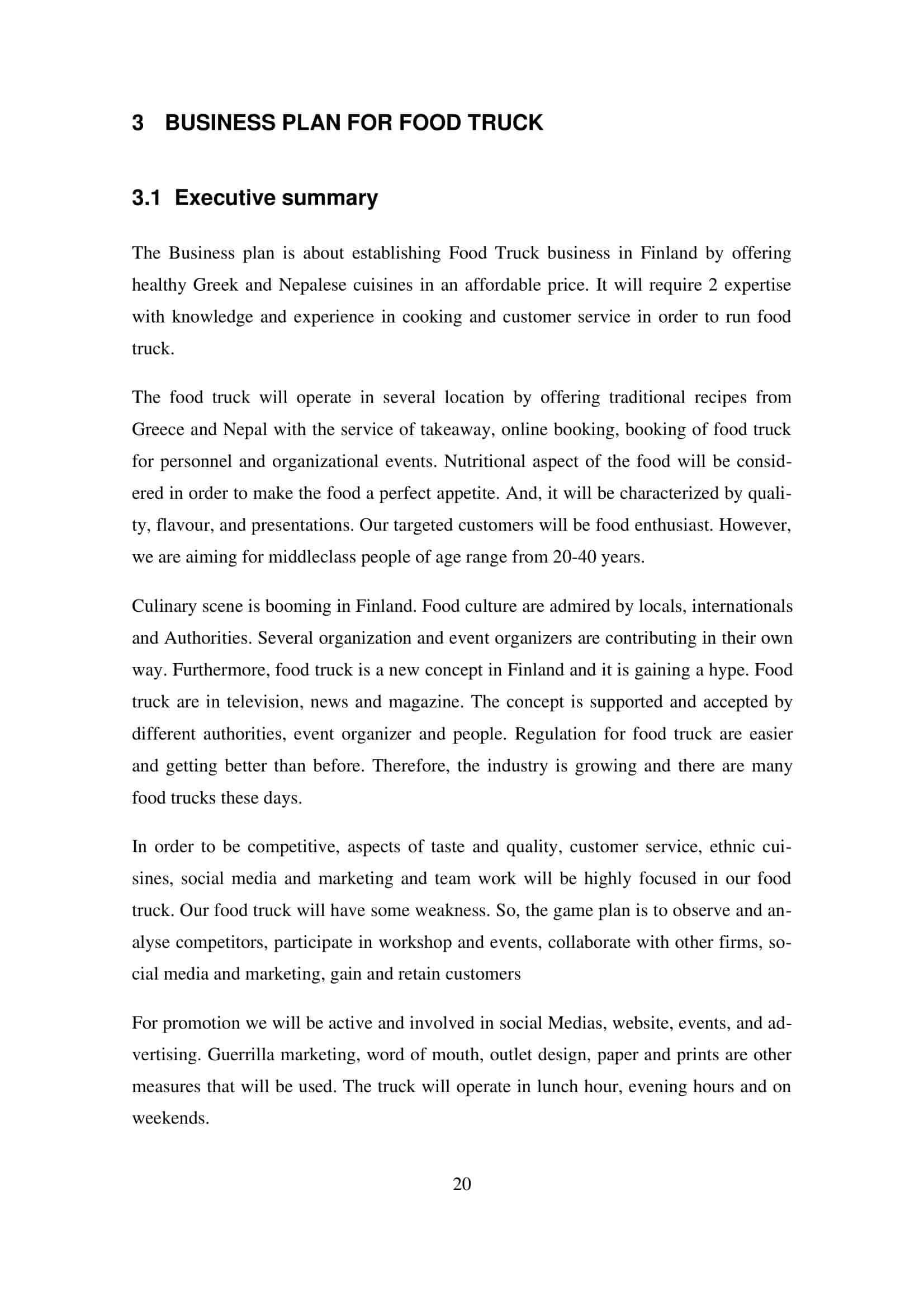Although mobile kitchens offer low rents and high flexibility, operators must simultaneously manage dozens of variables from municipal licensing to menu cost structures. Startups that cannot clearly answer an investor’s question “How many sales will this truck make per day?” are turned away before they even reach the financing stage. A detailed food‑truck business plan brings initial capital, fixed and variable expense items, location‑based sales projections, and combo menu profit margins under one roof, boosting your persuasive power in both bank loan and private investment presentations.
Table of Contents
35+ Ready Food Truck Business Plan Templates

TypeCalendar offers over 35 Food Truck Business Plan templates to suit a wide range of concepts, from a hamburger truck to a vegan bowl trailer. Each template comes with a “Regulatory Checklist” section that addresses food safety and mobile selling license requirements, a three-year food truck financial projections table, and an adjustable “break‑even” calculation sheet based on daily customer flow. In addition, the version prepared for the brunch‑oriented “morning rush” operation, the “late-night” model aimed at night festivals and the B2B plan set aimed at the corporate catering Sunday are available separately.
Food Truck Business Plan Templates
Template Section Structure
- Executive Summary – Truck concept, USP, target demographics; condensed investment summary.
- Menu & Sourcing Strategy – List of ingredient suppliers, seasonal menu plan, portion cost calculations.
- Market Analysis — location based pedestrian traffic data, competitor mapping, and a seasonal‑event calendar.
- Marketing & Sales — social‑media road show calendar, influencer collaborations, and loyalty‑card ROI estimates.
- Operations & Compliance – Food safety SOPs, waste management, electrical & LP gas requirements.
- Financial Plan – Initial investment, monthly OPEX, depreciation, three-year income‑expense statement, NPV/IRR analysis.
File Formats: One Template, Multiple Channels
TypeCalendar delivers its food‑truck business plans in multiple formats, following a “fill it once, use it everywhere” philosophy. In the Word (.docx) version, where you can edit the text most easily, all heading styles are locked and content areas are released, so that the document flow is not disrupted when applying your brand font. If you prefer to work collaboratively within the team, a Google Docs copy of the same template will show your investment partner’s feedback instantly, with the advantage of real-time comments and version recording.
The accompanying Excel or Google Sheets workbook lets you test financial assumptions on the fly: each new sales quantity scenario automatically refreshes the profit‑loss graph, and the break‑even point is calculated with live formulas. When you need a pitch deck, you can import summary pages into the PowerPoint template with a single click, and the slide placeholders automatically adapt to your brand’s color palette.
Success Story and Final Touch
Seattle‑based taco truck “Rolling Salsa” achieved a three‑fold displacement profit rate in 18 months using the “Late Night” model of the TypeCalendar plan template; the break-even schedule attracted decision makers at an investor presentation, the food safety SOP table shortened the license period. Your food truck venture can achieve similar success.
Download, Fill & Go
Download TypeCalendar’s Food Truck Business Plan templates archive now, add your menu costs and target location data, convert it to PDF and present it to the investor table. Turning your street food dream into a profitable reality on wheels is now as close as a few paragraphs and ready made tables.







































![Free Printable Roommate Agreement Templates [Word, PDF] 2 Roommate Agreement](https://www.typecalendar.com/wp-content/uploads/2023/06/Roommate-Agreement-150x150.jpg)
![Free Printable Business Case Templates [Excel, Word, PDF] Hiring, Simple 3 Business Case](https://www.typecalendar.com/wp-content/uploads/2023/05/Business-Case-1-150x150.jpg)
